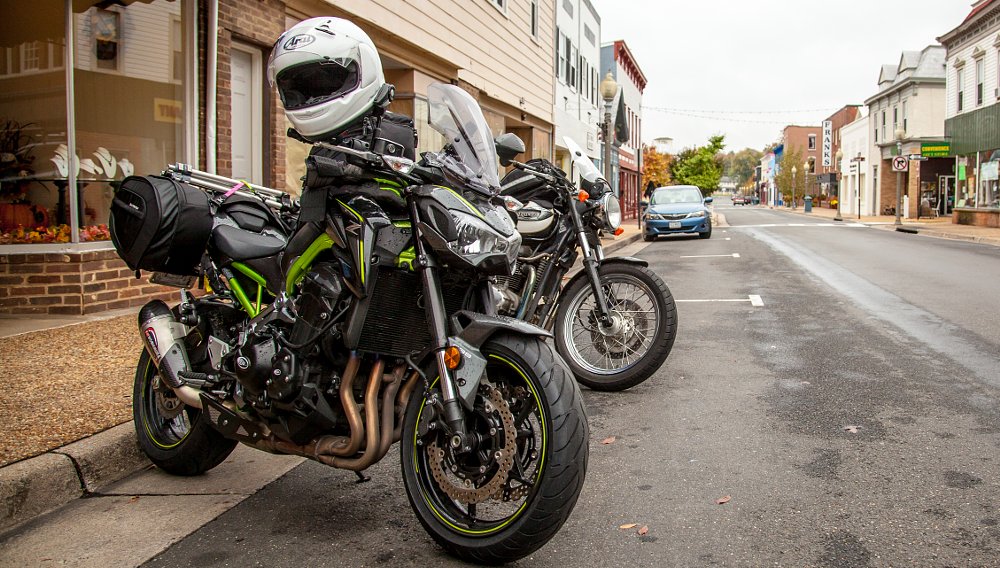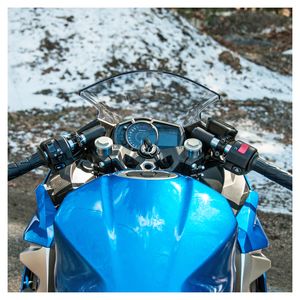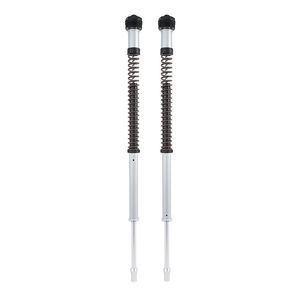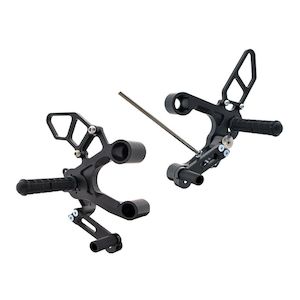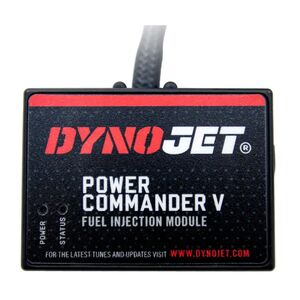Let’s get one thing out of the way immediately. All of the modifications in this article are for folks who are looking to maintain street functionality of their sport bike or sport naked while simultaneously improving performance.
It’s also important to keep your personal bike in mind as you read through this article, as not all mods will apply. For example, if you have a liter bike, upgrades to engine performance will be far less noticeable for you than something like tire or ergonomic upgrades. So don’t consider this a be-all-to-end-all list, but rather some curated suggestions that you can use to help improve your bike where it needs it.
We are using our long-term Kawasaki Ninja 400 to show the modifications covered in this article. The little Ninja is an awesome value considering its cost and the amount of performance you get for the money. But its lower price tag also means that the Ninja 400 isn’t going to get the high end racey-bits like its bigger brothers. Because of the popularity of this bike, there are already a ton of aftermarket parts for us to consider, thus making it a great “example” model to use for this article.
Whether you’re looking to shave seconds off your lap time or just improve performance in the canyons, these modifications can help to open up a motorcycle’s potential. Let’s kick things off with suspension.
Suspension
If you’re limited on funds and you’re only able to make one upgrade to your bike, suspension is almost always the best place to start. All the power in the world won’t help you get faster if you’re not confident in how your bike handles as speeds increase. Upgrading a bike’s suspension improves feel. Better feel lends itself to increased confidence and faster lap times.
At a minimum, you want to make sure that you have the right springs for your rider weight (include full riding gear in this measurement). If your bike is just a bit over or undersprung for your weight, you can adjust the suspension’s preload setting to dial in the correct amount of sag. However, if your weight is outside of the adjustable range for your stock suspension, a set of new springs for your shock and/or fork is where you should start.
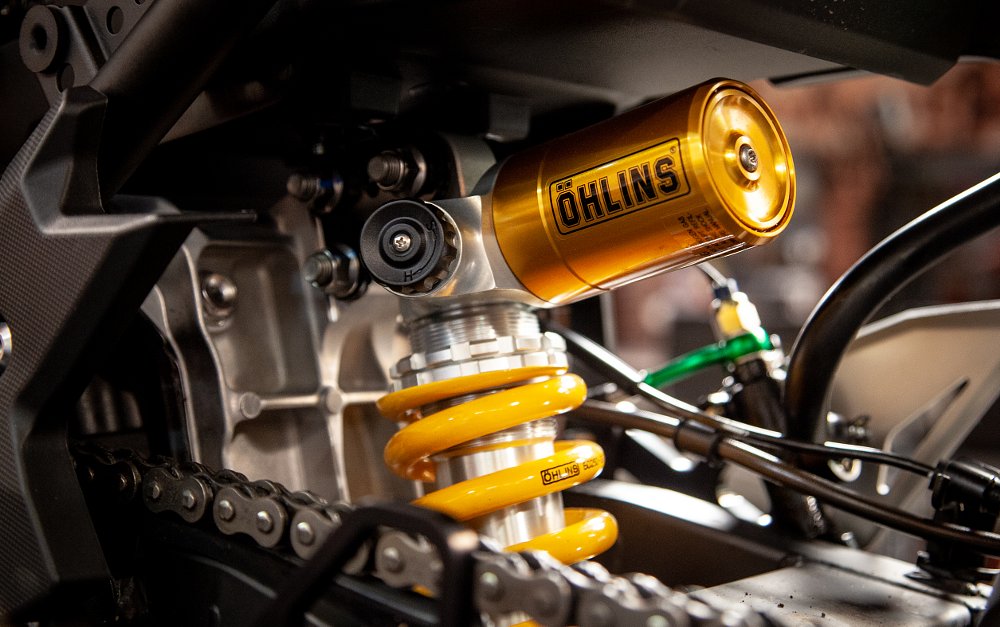
If you remember my original review of our Ninja 400, the suspension on this bike was pretty good, considering the price point, but it lacked any adjustability outside of a basic five-position preload collar on the rear shock. Therefore, I added an Öhlins NIX22 Cartridge kit to the front and a STX shock to the rear. This setup provides full adjustments for compression and rebound damping, in addition to preload. I was also able to order the new suspension with springs designed for my correct weight. (Insert Lemmy making a “Spurg is as big as a house” joke here.)
Just keep in mind there are a wide range of options to choose from in the world of aftermarket suspension parts, a lot of your decision is going to be based on what brands are available for your machine. You could also consider sending your stock suspension off to someone like Race Tech to have it rebuilt.
Once you get your new suspension installed, it is important to make sure you get it set up correctly. I’ve talked to many riders who have pulled their suspension out of the box, installed it, and ridden it without adjusting it for their weight. You need to make sure to set the sag, or preload, for your rider weight once the new suspension is installed. From there you can dial in compression and rebound damping if those adjustments are available.
This holds true for all of those bikes out there that come with killer stock suspension components, as well. The Speed Triple RS that we recently tested had a full Öhlins setup from the factory. Working with Mark Rozema of Markbilt Race Bikes to get it dialed in, the bike was night and day after having him tune it for me.
Ergonomics
It’s extremely important to be able to easily and quickly move around on your bike while maintaining proper body position. One of the simplest ways to improve ergonomics to almost any bike is the addition of tank pads.
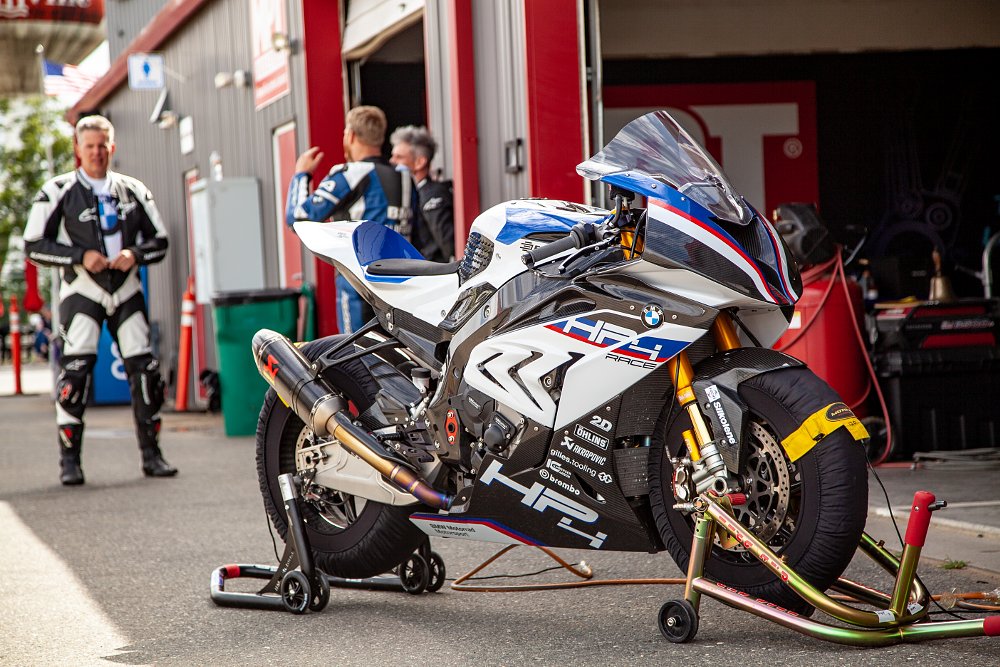
While they might not sound that important, a good set of pads allow you to lock your knees into the tank and engage your core. Remember, the handlebar is there for steering the bike, not for bracing yourself. That is what your legs are for. I prefer Stompgrip pads as they provide maximum grip, but another option are TechSpec pads, especially if the bike is being ridden for comfort as well as for sport.
Speaking of handlebars, aftermarket clip-ons are usually lower than the stock offering, which pulls your body closer to the bike and usually shifts the weight a bit more toward the front wheel. This helps with body positioning as well as maintaining grip at the front tire. This is a popular mod for guys on older sport nakeds, like Suzuki SV650s and Ducati Monsters, who are converting them for track use. But even if your bike already has stock clip-ons, the aftermarket options can usually still improve performance.
I like the Woodcraft clip-ons because they can be installed without removal of the triple tree. Because of their multi-piece design, not only are they easy to install, but they’re also easier and more affordable to repair in the event of a crash when compared to most stock parts.
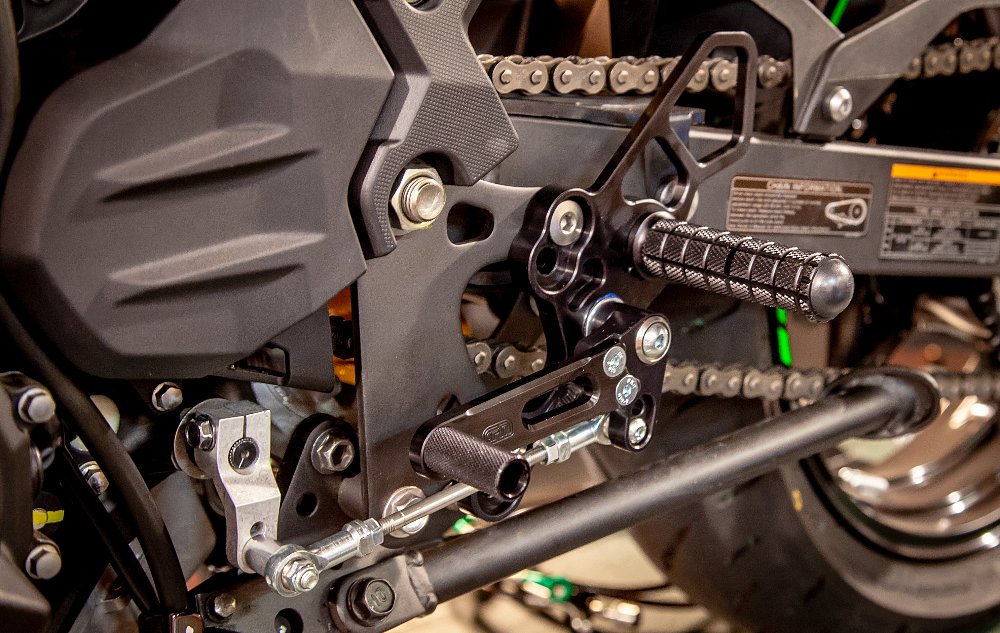
The same rationale applies to the Woodcraft rearsets I installed on the Ninja. Rearsets allow the rider better ground clearance as well as peg grip and feel. The Woodcrafts are also widely adjustable. Not only can I alter the height of the rearsets themselves, but I can also fine tune the placement of the footpeg, shifter, and rear brake pedal. All of this allows riders to get the exact fit they prefer.
The seat on the Ninja is low for my taste, but short of adding track body work, I don’t have too many options at this time. Being able to adjust the ergonomics of the clip-ons and rearsets helped immensely in getting the bike setup for my preferred riding style. Maximum adjustment is the name of the game when fine tuning a bike for aggressive riding.
Performance
When it comes to performance, most riders should start with their tires. With the exception of some very high-end machines that come stock with premium rubber, factory tires on most bikes are less than ideal for spirited riding.
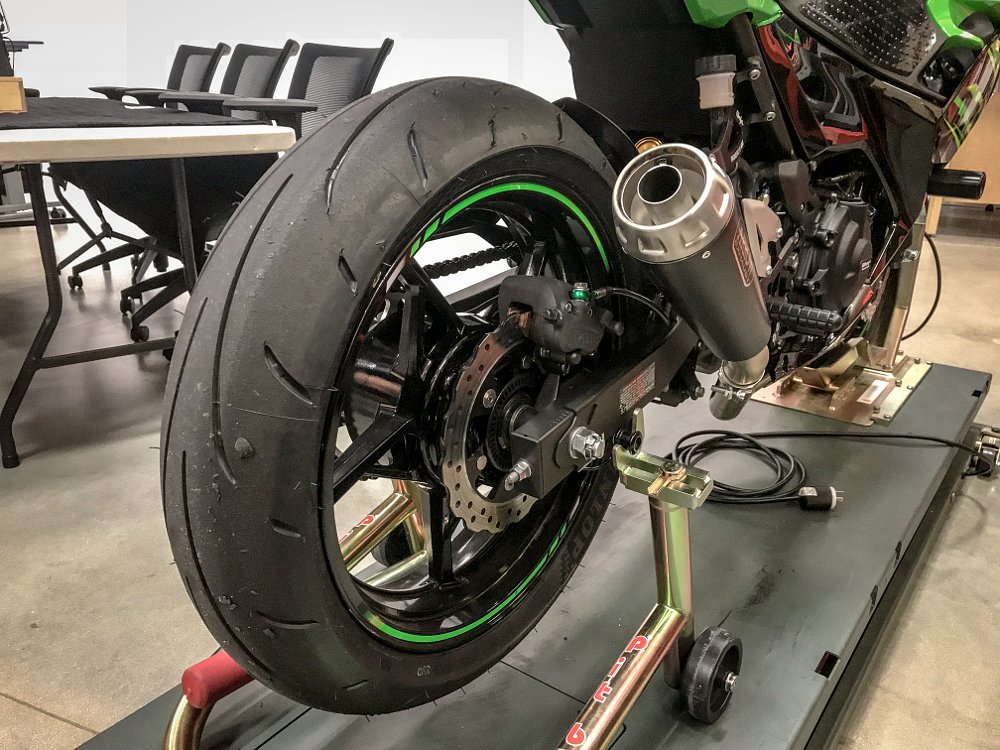
While the Ninja 400’s stock tires were better than I was expecting, given its price, I wanted an option that was more suited for aggressive use. With that in mind, I upgraded to the Dunlop Q3 Plus tires. The Q3 Plus is a great tire for street use and the occasional track day. It is also available in the Ninja 400’s odd tire sizes. If you want a more aggressive option, check out the Dunlop Q4 or the Pirelli Diablo Supercorsa SPs. Both are excellent DOT track options that can also be used on the street.
One of the first upgrades a lot of riders make is to their stock exhaust. While I am not about to engage in the “Loud pipes save lives” argument, I will talk briefly to the performance gains you can hope to make.
On smaller displacement sport bikes like our Ninja 400, an aftermarket exhaust makes more sense than on larger bikes. For example, the Arrow full system exhaust we added shaved about seven pounds off the bike, and with the addition of a DynoJet Power Commander and performance air filter, we can expect to gain about four to five horsepower. On a bike that only claims 44 horsepower, that’s roughly a 10-percent increase in power. Pretty impressive with minimal effort.
This is less noticeable on larger displacement bikes. For example, that same increase in power on a bike making 160 horsepower is only about two-percent more power. Because of this, I would encourage riders on more powerful bikes to consider this option more carefully before investing their money that could better be spent elsewhere, like for track day training.
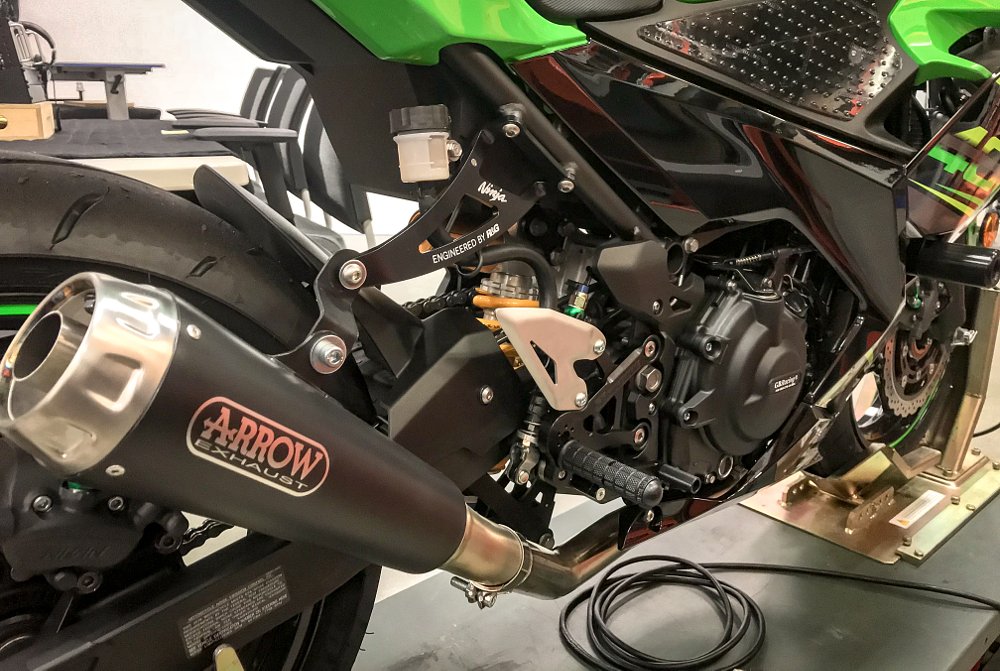
One of the added benefits I enjoyed with the new exhaust on the Ninja 400 actually ties back to the ergonomics. By removing the passenger pegs, and installing a new R&G exhaust hanger, the sleeker muffler profile of the Arrow system no longer interfered with the heel of my right boot. This was one of my biggest complaints with the stock Ninja 400.
Braking
One of the easiest ways to improve braking is to swap out your pads. EBC has a whole line of brake pads from comfort-oriented street pads to extremely aggressive track-only racing pads. A good place to start is with HH Sintered pads. These are great street pads that can also be used on the track.
However, you could also consider the EBC EPFA Road Race pads if you’re regularly tracking your bike or riding aggressively on the street. They’re less prone to brake fade and they provide an aggressive initial bite. I had wanted to use them for this project, but they were not yet available for the Ninja 400 when I was putting this project together.
A lot of folks complained about the brake feel and fade on the Ninja 400. While part of that can be improved by replacing the pads, the stock rubber brake lines aren’t doing it any favors, either. Rubber lines are prone to flex and expansion during aggressive braking situations. Our stock Yamaha YZF-R6 suffered the same problem. If your bike doesn’t come with steel braided brake lines from the factory, adding them can help immensely with reducing brake fade and improving feel over the stock rubber lines.
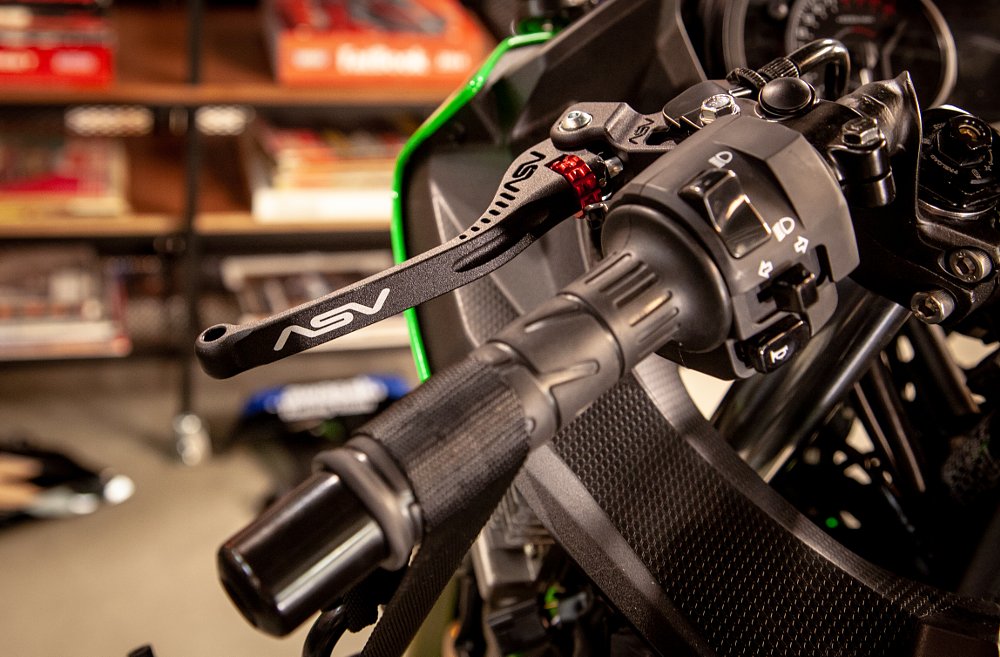
A final change I made here was to get rid of the shitty, non-adjustable levers, and replace them with fully adjustable ASV levers. While this could arguably fall under an ergonomic modification, it helped immensely with both brake and clutch feel and performance. If you have larger hands or just prefer a quick one-to-two finger pull, this modification makes a huge difference over the cheaper levers found on a lot of stock motorcycles.
Protection
The final category I want to address is protection. There are a ton of options to choose from when it comes to protecting your motorcycle but if you can only add one option, go with case protectors.
The reason I say this is that there is no easier way to get a whole bunch of folks pissed off than to crash and empty out all of your fluids all over the track. This will shut down the track day for everyone until the track officials can get it all cleaned up. This is less about preserving the integrity of your bike, but rather being a thoughtful motorcyclist to the others around you.
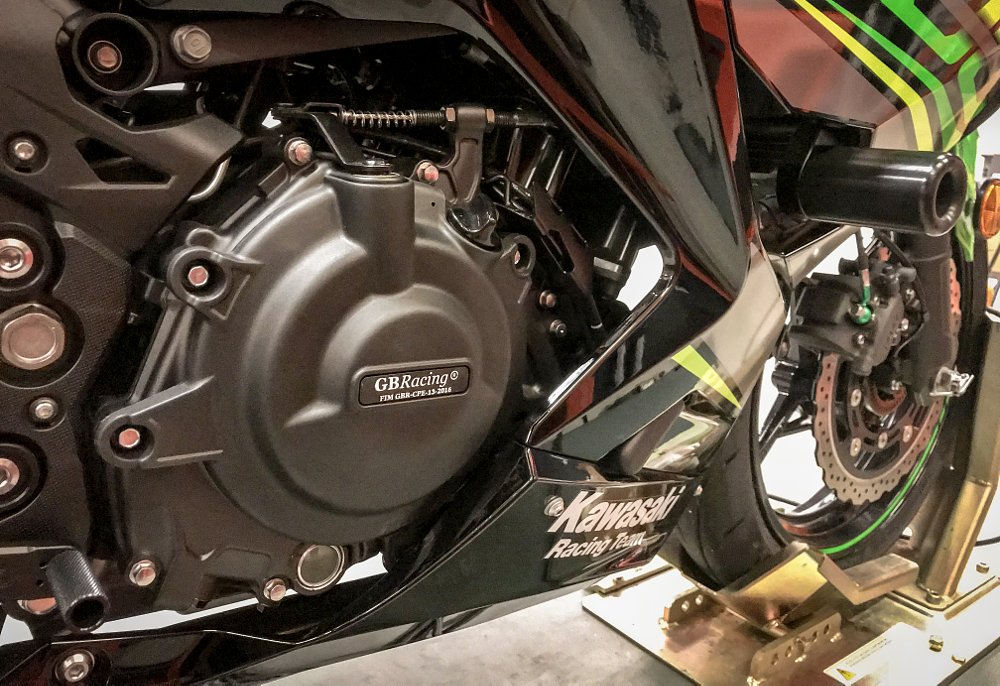
I installed GB Racing covers on the Ninja 400 because they’re an easy option to bolt on right over the existing cases. There are also more sophisticated pieces like the Woodcraft covers that actually replace the case itself and have a large, replaceable slider pad built into it. Those are excellent options as well, especially if you’re building a dedicated track bike that could see multiple crashes in its lifetime.
After that, you can go crazy with frame sliders, axle sliders, swing arm protectors, you name it. It all comes down to your budget and what you’re looking to invest.
Conclusion
As I pointed out in the beginning, this is not an all-encompassing guide to what you need to change about your bike before hitting up the race track or curvy mountain road. You can have a lot of fun out there on a bone stock bike.
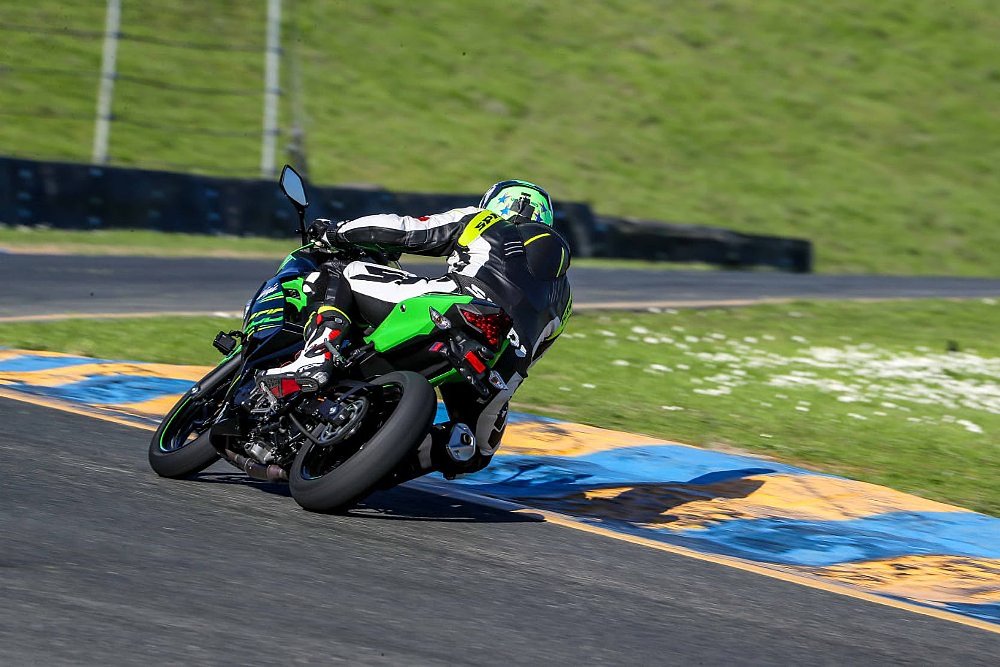
Rather, this is a list of suggestions for you to consider as your skills and wallet allow. If you encounter a hurdle with your bike’s performance, this article will be here as a reference for you to return to as needed.











